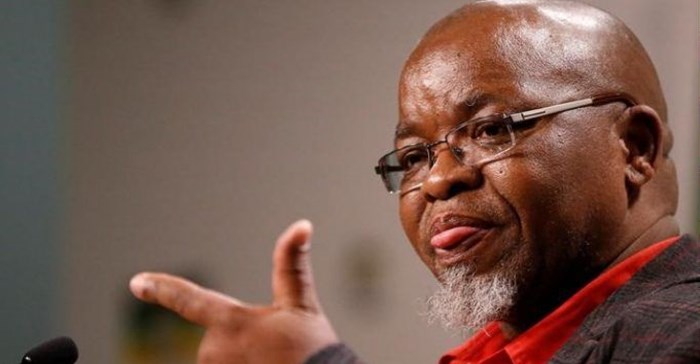
Subscribe & Follow
Advertise your job vacancies
Coal remains primary energy source in IRP2019
The latest iteration of Integrated Resource Plan (IRP2019) reflects what Mineral Resources and Energy Minister Gwede Mantashe has been saying for some time. Coal will remain a key component of the energy mix, albeit in an environmentally friendly manner.

Mineral Resources and Energy Minister, Gwede Mantashe
“Coal will continue to play a significant role in electricity generation as the country has the resource in abundance. New investments will be directed towards more efficient coal technologies (high efficiency, low emissions), underground coal gasification and the development of carbon capture and storage to enable us to continue using our coal resources in an environmentally responsible way,” the minister said.
“It must be noted that while the coal’s installed capacity will be lower than current installed base, it will remain the dominant energy supply contributing 59 %of the energy volumes required to meet demand. Nuclear will contribute 5 %; hydro 8%; photovoltaic 6%, wind 18%; gas and storage 2%,” he said
Nuclear
Mantashe said nuclear power features as a source of clean energy that can reduce emissions. “It is a globally accepted fact that nuclear as a clean source of energy can contribute significantly to the reduction of emissions."
There is a move towards the development of small modular reactors that are considered more manageable investment when compared to a large fleet approach. The IRP 2019 provides for the extension of the design life of Koeberg power plant, as well as additional new nuclear capacity in the future.
“Taking into account the capacity that will be decommissioned into the future, nuclear at a pace, scale and cost affordable to the country is a no-regret option,” he said.
Renewables
Renewable energy combined with storage presents an opportunity to produce distributed power closer to where demand is and to provide off-grid electricity to far-flung areas in South Africa," Mantashe said.
In addition to the sun and wind resources, the country has some of the world’s largest high-grade resources in at least six key commodities that play a critical role in the global energy storage sector.
Vanadium, platinum, palladium, nickel, manganese, rare earths, copper and cobalt have a potential to create new industries and localisation across the value chain.
“The IRP 2019 continues to make provision for significant rollout of renewable energy and storage. Eskom is already working on a utility scale battery storage, which will allow us to assess the benefits to our power system as we diversify the energy mix,” he said.
He said gas to power technologies will provide the flexibility required to complement intermittent renewable energy and meet demand during peaking hours.
“While in the short term the opportunity is to pursue gas import options, local and regional gas resources will allow for scaling up within manageable risk levels. Indigenous gas like coal-bed methane and ultimately local recoverable shale and coastal gas are options we are considering,” he said.
The IRP 2019 makes provision for gas from the year 2024.
Changes in energy consumption and assumptions
The minister highlighted the changing electricity supply and consumption patterns, which affects infrastructure planning.
“Technology advancements and associated decline in cost makes it possible for end users to generate their own electricity. Increasing electricity tariffs have led to energy intensive users becoming uncompetitive, resulting in reduced production and shutdowns in some areas.”
The IRP2019 takes into account unreliable power supply due to challenges experienced by Eskom. Unreliable supply said the minister is resulting in electricity users looking at alternatives to meet or supplement their energy needs.
“The assumption in the IRP 2019 to the extent possible takes into account all these changes,” he said.
Key changes to the assumptions include amongst others the revision of the Energy Availability Factor (EAF) projections as submitted by Eskom.
Grand Inga Project
In support of regional integration and energy trading, South Africa has entered into a treaty for the development of the Grand Inga Project in the Democratic Republic of Congo (DRC).
Some of the power is intended for transmission to South Africa across DRC, Zambia, Zimbabwe and Botswana.
The project said the Minister, will not only provide clean energy, but will advance energy trade between Southern African Development Community (SADC) countries.The IRP2019 - which provides a blueprint for South Africa’s envisaged energy mix - supports a diversified energy mix including coal, nuclear, renewable energy and gas. Cabinet’s approval of the IRP2019 will provide much-needed certainty to a critical area of the economy, he said.
Mantashe added that the energy sector contributes close to 80% towards the country’s total greenhouse gas emissions, of which 50 % is from electricity generation and liquid fuel production. He said government will also work with Eskom to ensure the power utility complies with the minimum emissions standard over time.
Related
Seriti’s Naudesbank Colliery to contribute significantly to SA's mining sector and country's economy 14 Mar 2025 Mining veteran, Ben Magara appointed Exxaro CEO 13 Mar 2025 9th Global Gas Outlook 2050 highlights Africa’s natural gas potential 11 Mar 2025 Mantashe adds Russia and Iran to nuclear chat 19 Feb 2025 Forvis Mazars disputes PetroSA deal allegations 10 Feb 2025 Anglo finalises Jellinbah sale to Zashvin 29 Jan 2025







